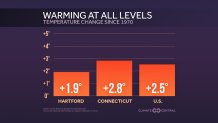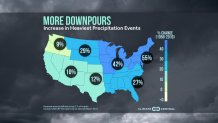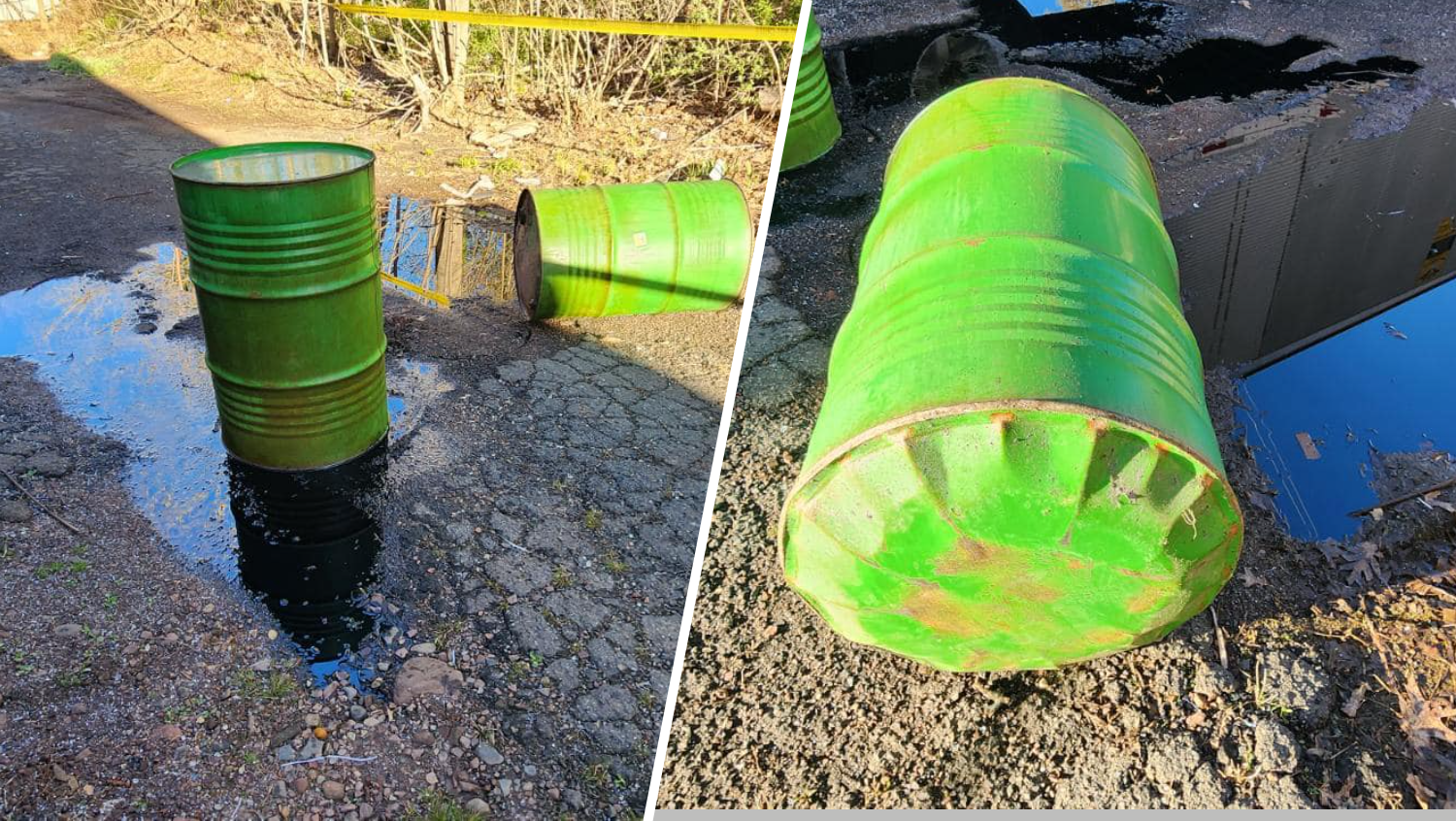NBC Connecticut is looking at climate change and its impact on our state.
Climate scientists agree that the globe is warming, and that it’s due to humans. The question is – what does a warmer world look like in New England, and is there anything we can do about it?
Shorter winters, longer and more intense heat waves, rising sea level, and bigger rain storms – all these things show that climate change isn’t something that’s coming, it’s something that is here.
If you've lived in Connecticut long enough you know the climate is changing.
Summers are hotter and winters are warmer. Since 1970 the average temperature in Hartford has increased nearly 2 degrees. For Connecticut as a whole it's nearly 3 degrees.

While weather varies from season to season, the long term trends are clear. As fossil fuels are burned by cars and power plants the carbon dioxide released acts as a greenhouse gas, warming the globe, and also warming Connecticut.
Local
On Long Island Sound water temperatures are warming, changing the types of marine life that can survive and thrive.
Warming oceans and melting ice sheets are also causing sea level to rise on Long Island Sound. In the last 100 years the sound has risen by nearly a foot, and that pace is accelerating. While a foot doesn't seem like much we're already seeing an increase in flooding. Storms like Hurricane Sandy will produce more severe flooding in the future.
By 2050, a 1 in 100 year flood today will be more like a 1 in 23 year flood. Floods that happened once in a life time will be nearly 4 times as frequent.
As the atmosphere warms it can hold more water vapor. The result is heavier rainstorms. In the northeast, heavy precipitation events have increased 55 percent in the last 60 years. Flash floods are becoming more common as every degree we warm the atmosphere can hold about 4 percent more water.

Climate change impacts us every day. As the earth continues to warm the impacts will become more and more severe here in Connecticut and throughout the globe.
Just last week the globe reached a carbon dioxide level of 415 parts per million - a level not seen in more than 2 million years.
Climate Change in Hartford: Temperature Vitals
Here is a look at current temperatures and the historic trend that shows a nearly 2-degree rise since 1950.
Data: weather.com, Climate Central



